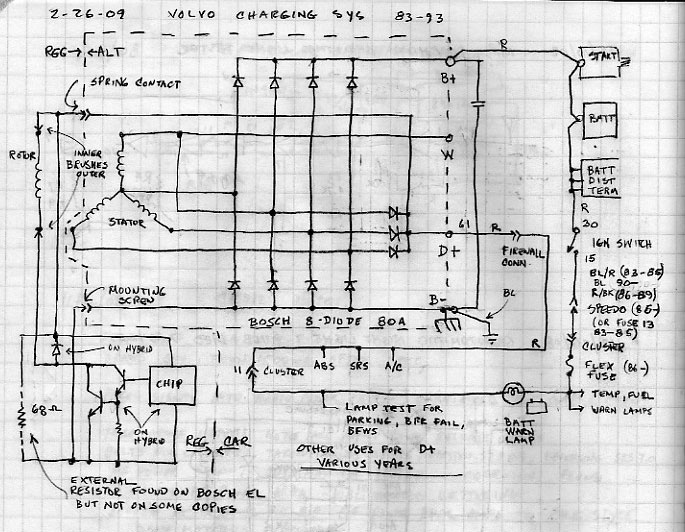|
The real purpose for the D+ wire in the Bosch system is a secret from most folks until they read Bosch's explanation of "pre-excitation."
Let me see if I can summarize:
Using the drawing I posted earlier in the thread and again below you will see the battery connected to the D+ wire through a 100mA bulb with key in the run position, KP-II.
That is just enough current to cause the rotor to have a magnetic field sufficient to get the stator windings producing alternating current as the rotor turns through them. This current is rectified by two diode arrays. The large one provides the power to the car and recharges the battery (B+), while the smaller 3-diode array supplies the rotor with its full D+ voltage, which is the same value produced at the B+ terminal.
Because now the D+ and the B+ terminal (which the battery warning bulb is effectively across) are at the same potential, the warning lamp is dark.
With no turning of the rotor, no voltage is produced, so the warning lamp is on, finding a "ground" through the rotor and regulator. This "ground" is used as you noted, to provide a lamp test of those warning lamps (BFWS, brake failure, parking) which otherwise could never be tested except by their functions being activated.
If you check the wiring of various years, you will find other systems using this wire as an indication of whether the car is actually running or not, used for the AC, the SRS, and the ABS accessories. It's original "sole purpose" was to get the alternator started, which Bosch calls pre-excitation. As the cars evolved, the wire has acquired a number of purposes.

--
Art Benstein near Baltimore
"Why don't sheep shrink when it rains? Lanolin. This oil causes sheep to shed water. This water-tolerance explains why sheep do well as hydraulic rams." -Spook
|